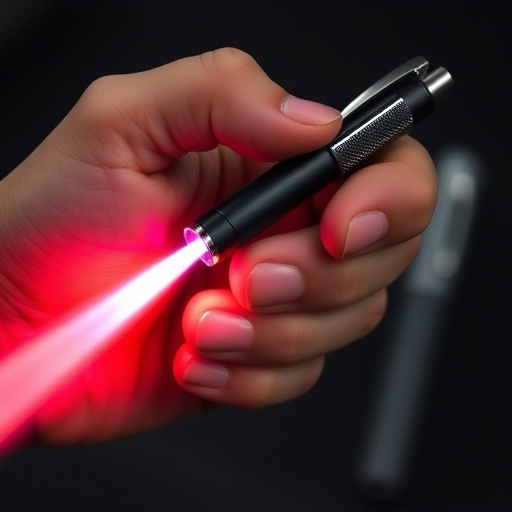Pen stun guns, resembling regular pens, offer a compact and discreet self-defense solution. They work by disrupting the body's nervous system through electric shocks, temporarily incapacitating assailants. With rechargeable batteries, these devices provide multiple uses. Stopping power ratings in joules, design, probe length, and contact surface area are key factors for effectiveness. Performance is determined by voltage output (for stronger shocks), current type, electrode design, and control mechanisms like stun sequence control and adjustable voltage. Proper consideration ensures a well-informed decision for personal safety.
“Discover the power behind a seemingly simple tool—the pen stun gun. These compact devices offer a surprising punch, making them popular self-defense choices. In this article, we explore what sets these stun guns apart and how their stopping power ratings are determined.
From the fundamentals of their operation to the factors shaping their effectiveness, we demystify the technology behind pen stun guns. Whether you’re considering one as a personal defense mechanism or simply curious about their capabilities, this guide provides valuable insights.”
- What are Pen Stun Guns and How Do They Work?
- Understanding Stopping Power Ratings for Pen Stun Guns
- Factors Influencing the Effectiveness of a Pen Stun Gun
What are Pen Stun Guns and How Do They Work?
Pen stun guns, also known as personal stun devices or stun pens, are compact and discreet self-defense tools designed to deliver a powerful electric shock for incapacitating an assailant temporarily. These innovative gadgets resemble regular writing instruments but pack a surprising punch, making them a popular choice for individuals seeking non-lethal force options.
They work by using electricity to disrupt the body’s nervous system, specifically targeting motor neurons, which control muscle movement. When activated, a pen stun gun releases a high-voltage, low-amperage electric pulse that disrupts communication between the brain and muscles, causing the target to experience muscular convulsions and lose balance or strength momentarily. This sudden incapacitation allows the user to escape or seek help. The devices are typically powered by rechargeable batteries, ensuring they can be used multiple times with proper care.
Understanding Stopping Power Ratings for Pen Stun Guns
Stopping power ratings are a critical factor in evaluating the effectiveness of a pen stun gun, especially for those seeking personal protection. These ratings provide insight into how powerful a stun device is and its ability to disable an attacker. When considering a pen stun gun, it’s essential to understand that these devices deliver an electric shock through two primary methods: electrical current or electrochemical energy.
The rating typically indicates the amount of joules delivered by the device, with higher numbers suggesting more significant stopping power. A higher joule rating means the stun gun can generate a stronger shock, leading to quicker incapacitation. However, it’s not solely about the number; factors like the device’s design, probe length, and contact surface area also play a role in its effectiveness. Therefore, when researching pen stun guns, examining these aspects alongside ratings ensures a well-informed decision for personal safety.
Factors Influencing the Effectiveness of a Pen Stun Gun
The effectiveness of a pen stun gun, or any stun device for that matter, is influenced by several key factors. One of the primary considerations is the device’s voltage output. Higher voltage typically translates to more intense shock, rendering the target immobilized for a period. However, it’s crucial also to account for the size and weight of the pen stun gun, ensuring its portability and ease of use without compromising power.
Another factor to note is the type of current used—AC or DC. Different currents can affect the device’s stopping power and the duration of incapacitation. Additionally, the design and quality of electrodes play a significant role; sharp, well-designed electrodes ensure better contact with the target, enhancing the stun gun’s overall effectiveness. Moreover, the presence of features like a stun sequence control or adjustable voltage settings can provide users with more control over the intensity of the shock delivered.
Pen stun guns, with their compact design and powerful stopping capabilities, offer individuals a means of personal protection. Understanding the stopping power ratings and factors influencing their effectiveness is crucial when choosing the right self-defense tool. By considering these aspects, users can make informed decisions, ensuring they have the best possible defense in various situations. Remember, knowledge is the first step towards staying safe, and with proper use, a pen stun gun can be a reliable game-changer for personal security.
